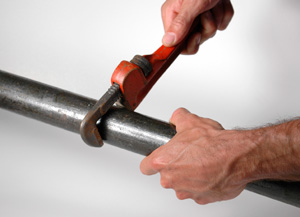If you own a home that is going to be vacant this winter, it is critical that you take the time to winterize the plumbing. Not taking proper precautions can end up costing you hundreds or even thousands of dollars in replacement plumbing and emergency repairs. If a vacant home is not properly winterized, water can freeze in pipes causing them to crack. This leads to not only plumbing repairs, but also floor, ceiling, and drywall repairs due to both water damage and having to cut into them to replace pipes. It is much more prudent and financially responsible to take proper steps to winterize your plumbing before it becomes an issue.

However, for some homes just leaving the heat on is not enough. If there is exposed plumbing or the home is poorly insulated, winterizing is the best solutions to ensure that the home is safe during the cold winter months. To winterize your home, follow these steps:
- Turn off the water. There should be a supply shut off valve outside that you can turn off. If you have a well you also need to turn off the breaker to the pump.
- Turn off and drain your water heater. If it is electric, make sure that you also turn off the breaker to the water heater.
- Drain and blow out the water supply lines. Turn on all the faucets and let them run out of water. Leave them open for the winter. Use an air compressor to blow out the lines to ensure that there is no standing water in them. Many people skip this step and get lucky, but if there is any standing water left in the pipes, it could freeze and cause them to crack.
- Drain water softeners, water treatments systems, and all water filters in the house.
- Flush all the toilets until they run out of water. Fill them with anti-freeze to prevent any issues.
- Disconnect and drain any appliances that use water. Think of things like your dishwasher, washing machine, refrigerator (if you have an ice maker). Anything that uses water needs to be drained.
- Turn off you electrical system. Make sure that you turn off all your breakers.
- Drain any condensate lines that connect to your HVAC system.
- Post a sign that the home has been winterized and none of the plumbing is to be used. This will let any visitors (expected or not) know that they cannot use the plumbing in the house.
When you return, you will need to reverse the steps to de-winterize the home and make it livable again. Remember, never use any plumbing until you have de-winterized the pipes and toilets.
